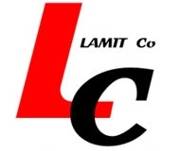
A satellite internet solution uses a satellite connection as a high-speed digital link between a customers location and the NOC's (HUB's) Internet backbone. The data travels from the satellite equipment at the customers location, to the satellite, and then to the HUB's (NOC's) teleport for routing to the Internet.
The teleport is a secure facility where many large aperture satellite dishes are operated. The Hughes, Eutelsat, Hellas or Intelsat operations center is located at these teleports. Each satellite provider has it's equipmente located in a leased collocation area inside these Network Systems operations center, for Eutelsat or Intelsat or Hughes or Hellas, or any other satellite owners.
At the Network Operations Center (NOC), routers are connected to the Internet using DS-3 and optical connections provided by several separate Tier-I Internet backbone providers. It is at this point that the satellite network meets the Internet backbone.
VSAT Systems uses a satellite connection as a high-speed digital link between a customers location and the US Internet backbone. The data travels from the satellite equipment at the customers location to the satellite, and then to the teleport for routing to the Internet.
The teleport is a secure facility where many large aperture satellite dishes are operated. The SES Americom operations center is located at the teleport and our equipment is located in a leased area inside the Network Operations Center (NOC).
At the NOC, routers are connected to the Internet using OC-3 optical connections to a Tier-I Internet backbone provider.
Proprietary acceleration and advanced spoofing technology is employed to provide IP transparency and increase throughput speed. Spoofing is what makes the service capable of very high speeds.
Spoofing is accomplished by special NOC equipment (Hybrid Gateway) that causes TCP acknowledgments to be returned to the sender very quickly. It does this by spoofing (pretending to be the remote site) and acknowledging the packets instantly, at the same time as it forwards the packets to the remote site. TCP sees rapid acknowledgments and therefore ramps up its speed quickly. The Hybrid Gateway also looks for the real acknowledgments and discards them. If an acknowledgment is missed, the Hybrid Gateway resends the packet from its buffer. It is in this manner that multi-megabit speeds are made possible over satellite.
Satellite broadband Internet connections use a communications satellite and
a dish to connect you to the Internet.
Advantages of a satellite internet broadband connections are: several times
faster than dialup; the broadband connection is "always on"; satellite
broadband Internet is available almost anywhere in Europe, South Africa, North
Africa, North America, South America, the Middle East where the subscriber has
a clear view of the southern or northern sky; Typically faster than terrestrial
regular broadband connections. Disadvantages of satellite internet broadband
connections: special equipment is required; relatively expensive to "get
started" because of special satellite equipment costs, like the VSAT terminal
or the satellite dish.
Satellite Internet systems are an excellent, although rather pricey, option for people in rural areas where Digital Subscriber Line (DSL) and cable modem connections are not available. A satellite installation can be used even where the most basic utilities are lacking, if there is a generator or battery power supply that can produce enough electricity to run a desktop computer system. The two-way satellite Internet option offers an always-on connection that bypasses the dial-up process. In this respect, the satellite system resembles a cable modem Internet connection. But this asset can also be a liability, unless a firewall is used to protect the computer against hack attempts.
The nature of the satellite connection is good for Web browsing and for downloading of files. Because of long latency compared with purely land-based systems, interactive applications such as online gaming are not compatible with satellite networks. In a two-way geostationary-satellite Internet connection, a transaction requires two round trips between the earth's surface and transponders orbiting 22,300 miles above the equator. This occurs in addition to land-based data transfer between the earthbound satellite system hub and the accessed Internet sites. The speed in such a connection is theoretically at least 0.48 second (the time it takes an electromagnetic signal to make two round trips at 186,000 miles per second to and from a geostationary satellite), and in practice is somewhat longer. Satellite systems are also prone to rain fade (degradation during heavy precipitation) and occasional brief periods of solar interference in mid-March and late September, when the sun lines up with the satellite for a few minutes each day. Rain fade and solar interference affect all satellite links from time to time, not just Internet systems.
Copyright 2004-2010 Lamit Company - All rights reserved.
Lamit Company - Internet prin satelit - Two way Satellite Internet